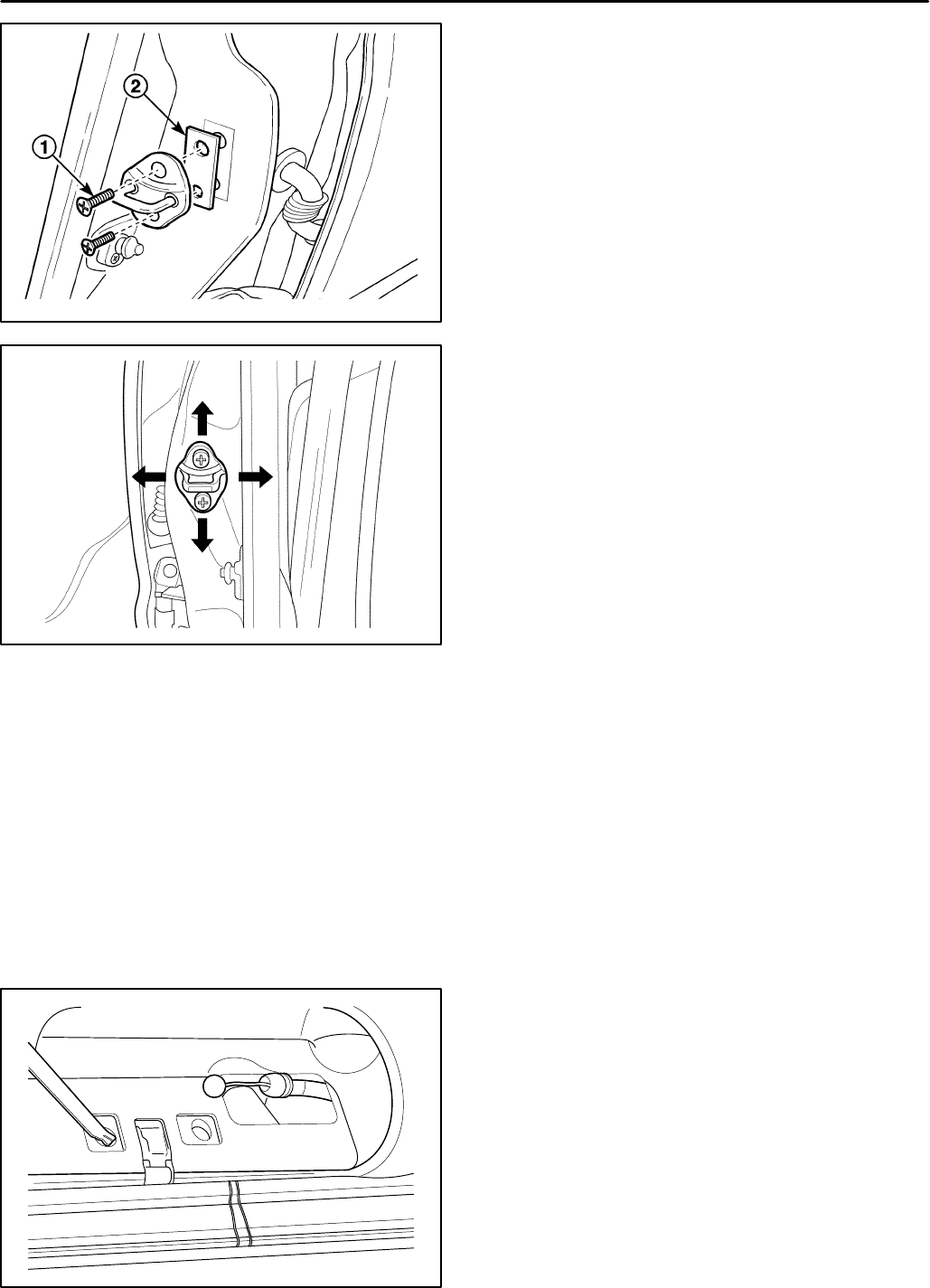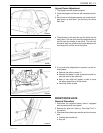
DOORS 9P – 11
DAEWOO M-150 BL2
D109C577
5. If a fore or aft adjustment is required, use the following
steps:
D Remove the striker screws (1).
D Remove the spacer in order to move the striker to-
ward the rear of the vehicle (2).
D Add a 2 mm (0.08 inch) spacer in order to move
the striker toward the front of the vehicle.
D Install the striker screws.
6. Perform the up/down or the in/out adjustment. Refer
to ‘‘Up/Down or In/Out Adjustment’’ in this section.
D109C574
Up/Down or In/Out Adjustment
An adjustment of the striker in the up and down or in and
out directions may be necessary for a number of reasons:
vehicle frame damage as the result of a collision, installa-
tion of new door weatherstripping, customer complaints
of excessive windnoise, or difficulty in opening or closing
the door. In order to adjust the door striker in an up and
down or in and out direction, perform the following proce-
dure:
1. The door must be properly aligned.
2. Loosen the striker screws.
3. The floating cage plate can be moved slightly using
the ends of the striker screws. Move the floating cage
plate to the desired position.
Notice: It is important to use a flat-end rotary file in or-
der not to damage the tapped floating cage plate. The
striker screws and the tapped floating cage plate are im-
portant attaching parts that could affect the performance
of vital components and systems.
4. If proper adjustment requires that the floating cage plate
be moved more than is possible, use an electric hand
drill and a 3/8- inch rotary file with a flat head in order to
enlarge the body opening in the direction required.
5. Tighten the striker screws to the correct position.
D109C578
TAILGATE LOCK STRIKER
ADJUSTMENT
Notice: The tailgate lock striker is an important attaching
part that can affect the performance of vital components
and systems and can cause major repair expenses. If re-
placement becomes necessary, the tailgate lock striker
must be replaced by one with the same part number or
with an equivalent part if replacement becomes neces-
sary. Do not use a replacement part of lesser quality or of
a substitute design. The specified torque values must be
used during reassembly in order to ensure the proper
retention of the part.


















